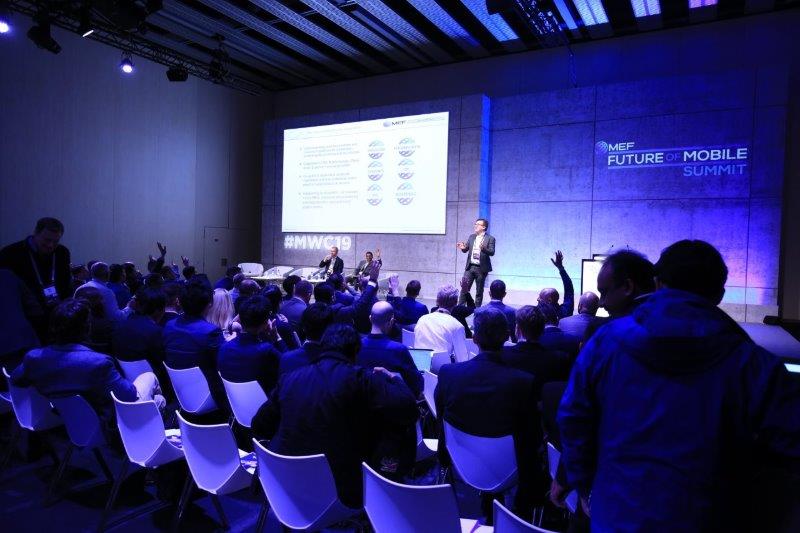Nischal Mewalall stepped down after five years of service as CEO of the South African Banking Risk Information Centre (SABRIC) in South Africa. The fights against fraud have increased, but the challenge today is much bigger too. A report from SABRIC casts a stark light on the escalating financial crime landscape, revealing a staggering nearly R3.3 billion lost in South Africa in 2023. This isn’t just a banking problem; it’s a mobile ecosystem challenge demanding our collective attention.
On June 17 2025, the CEO of the South African Banking Risk Information Centre (SABRIC) resigned and opened a new phase in the organisation fighting financial crime in the African country. Nischal Mewalall stepped down after five years of service as CEO, to pursue personal aspirations.

The change in leadership comes at a time when the country is seeing a new wave of fraud. SABRIC revealed a large R3.3 billion ($184.8 million USD) lost in South Africa in 2023 due to fraud. This isn’t just a banking problem; it’s a mobile ecosystem challenge demanding our collective attention.
Mobile at the Forefront of the SA Fraud Attacks
The insights from the SABRIC 2023 report resonate deeply within the mobile sphere, highlighting how criminals are increasingly leveraging mobile channels and technologies to perpetrate sophisticated fraud. For everyone from mobile operators and device manufacturers to app developers and fintech innovators, these trends underscore an urgent need for enhanced security measures and collaborative action.
- Digital Banking Fraud Explodes via Apps: The most alarming statistic from the 2023 report was the 45% surge in digital banking fraud, with associated financial losses jumping by 47%. The lion’s share of this—a massive 60% of all digital banking crimes—is now executed via banking apps, which saw an 89% year-on-year increase. This is a direct hit on the very convenience mobile banking offers, as criminals exploit vulnerabilities in app security, user authentication, and social engineering tactics delivered via mobile channels.
For everyone from mobile operators and device manufacturers to app developers and fintech innovators, these trends underscore an urgent need for enhanced security measures and collaborative action.”
- Generative AI Supercharges Mobile Scams: The report points to criminals using advanced technologies like Generative AI. This means more convincing phishing messages delivered via SMS or popular messaging apps, deepfake voice or video calls for identity spoofing, and highly personalised scam attempts that land directly on our mobile devices. The mobile device, being our most personal computing tool, becomes the primary vector for these AI-enhanced attacks.
- Card Not Present (CNP) Fraud Rides the Mobile Wave: While not exclusively mobile, CNP fraud—often occurring during online purchases—constituted 68% of gross card fraud losses, increasing by 19% in 2023. With the explosive growth of mobile commerce and in-app purchasing, a significant portion of CNP fraud is inherently linked to transactions initiated or completed on mobile devices.
- Mobile Onboarding & Application Fraud: The dramatic increase in application fraud, particularly in vehicle asset finance, is also a concern for the mobile ecosystem. Many of these fraudulent applications are likely initiated or completed through mobile-optimised web forms or dedicated mobile apps, highlighting the need for robust identity verification and secure onboarding processes on mobile platforms.
Recent Trends: SIM Swaps and Identity Theft Remain High
While a full SABRIC report for 2024 is not yet available, recent analyses citing SABRIC data indicate a continued escalation in mobile-centric fraud schemes:
- SIM Swap Fraud: Cases of SIM swap fraud have reportedly surged by 25% over the past year, with average losses per incident estimated at R10,000 ($560 USD). These attacks, which compromise mobile numbers to bypass authentication, continue to pose a critical threat, with some victims losing hundreds of thousands, up to R500,000 ($28,000 USD), within hours.
- Identity Theft: Identity theft and related financial crimes have seen an approximately 20% increase over the past 12 months. Over 8,000 identity theft cases were reported, with roughly 60% involving some form of online fraud, including unauthorized mobile transactions and fraudulent loan applications. Financial losses due to identity theft are estimated to exceed R2 billion ($112 million USD) annually, with young adults (25-35) disproportionately affected, accounting for about 45% of cases. One major bank alone reportedly reimbursed over R50 million ($2.8 million USD) to customers affected by SIM swap fraud last year.
The Ecosystem’s Challenge and Opportunity
These statistics lay bare the critical need for a unified response from the mobile ecosystem:
- For App Developers: The onus is on you to embed robust security from design, ensuring strong authentication (MFA), secure data handling, and continuous vulnerability testing for your mobile applications.
- For Mobile Operators: Your role in securing the network, combating SIM swap fraud, and verifying user identities is more crucial than ever. The integrity of the mobile network directly impacts the security of financial transactions conducted over it.
- For Device Manufacturers: Building secure-by-design devices with advanced security capabilities and strong hardware-level security is fundamental to protecting users from the ground up even in low entry phone markets.
- For Users: Education is paramount. Users must be empowered to recognise sophisticated scams, practice strong password hygiene, enable multi-factor authentication, and be wary of suspicious links or unsolicited communications on their mobile devices.
The next steps
As Nischal Mewalall, CEO of SABRIC, rightly emphasized, continuous innovation and strengthened defences are non-negotiable. The MEF Mobile Ecosystem Forum believes that true progress against these evolving threats hinges on unparalleled collaboration. We must foster deeper partnerships across banking, mobile network operators, app developers, security vendors, and policymakers to:
- Share Threat Intelligence: Rapidly disseminate information on new fraud vectors and criminal methodologies.
- Develop Industry Standards: Drive the adoption of robust mobile security standards and best practices for app development and user authentication.
- Educate and Empower Users: Launch concerted efforts to raise public awareness about mobile fraud risks and safe digital habits.
Innovate Security Solutions: Invest in advanced technologies that can proactively detect and mitigate mobile-specific threats, including AI-driven fraud detection. The mobile ecosystem is defined by its interconnectedness. It is precisely this interconnectedness that makes it both a powerful enabler of financial inclusion and a complex target for criminals. By working together, we can ensure that the promise of mobile banking and commerce remains secure and trusted for billions worldwide.
Join the conversation: How is your part of the mobile ecosystem addressing the rise in digital financial crime? Share your thoughts and strategies with us!




